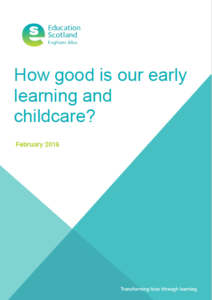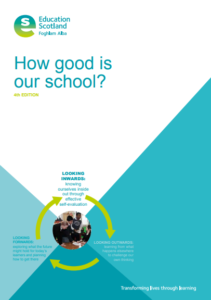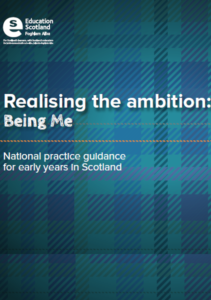Personal Plans
– Reflecting on Practice
QI 3.1 p41
To what extent are the GIRFEC principles reflected in the work of our setting? What actions do we need to make to bring about further improvements? How well do we use information about children’s wellbeing to support their care, learning and development?
What methods do we employ to ensure information is shared effectively about children’s wellbeing between parents/carers and practitioners?
How do we ensure important principles including consistency, dignity and privacy when supporting children with their personal care? What other important principles should we be considering?
How do we ensure that all practitioners undertake regular professional learning around legislation, statutory requirements, national and local guidance and codes of practice?
To what extent has creating an ethos and culture of inclusion and participation been successful in supporting children to make very good progress? How can this be strengthened?
QI 1.1 p11
Children’s care and learning routines are individual to their needs and are delivered with kindness and compassion. Personal planning reflects the holistic needs of each child to improve their wellbeing and support positive outcomes. It highlights the importance of involving children and their families in making decisions about their care and development.
p15
How do we ensure children’s individual needs are considered and responded to and planned for with families?
How do we ensure children’s personal plans are maintained in line with legislation and that they fully support children’s needs?
How do we know personal plans are having a positive impact on children’s nurture and support?
How do we link effectively with other professionals to support all of our children’s needs?
What best practice and current approaches are we using to influence and support children to reach their full potential?
QI 1.5 p35
How do we know our approach to transition supports best outcomes from children and their families?
How confident are we that our record keeping and relevant information to support children and their families is shared effectively and securely to support positive transitions?
How effective are our partnerships approaches (parents, health education, social service, third sector , other care services)when ensuring children’s wellbeing needs are being met?
QI 2.6 p43
To what extent are all children and young people supported so that both their learning and social and emotional needs are addressed?
How effective are our transition arrangements in raising the attainment of children and young people?
How effectively do we use transition information to plan progressive learning pathways for all children and young people?
QI 3.1 p49
How well do all staff know and understand GIRFEC, the wellbeing indicators, and the United Nations Convention on the Rights of the Child?
How well do all staff understand their role and responsibility in supporting learners’ health and wellbeing?
How well do we know and take account of local and national documents and guidance?
How well do we ensure that all children feel safe, healthy, achieving, nurtured, active, respected, responsible and included?
How well do we listen to and involve children and young people in making decisions about their wellbeing, their lives and their future?
How well do we ensure that all staff undertake regular professional learning around legislation, statutory requirements and codes of practice?




